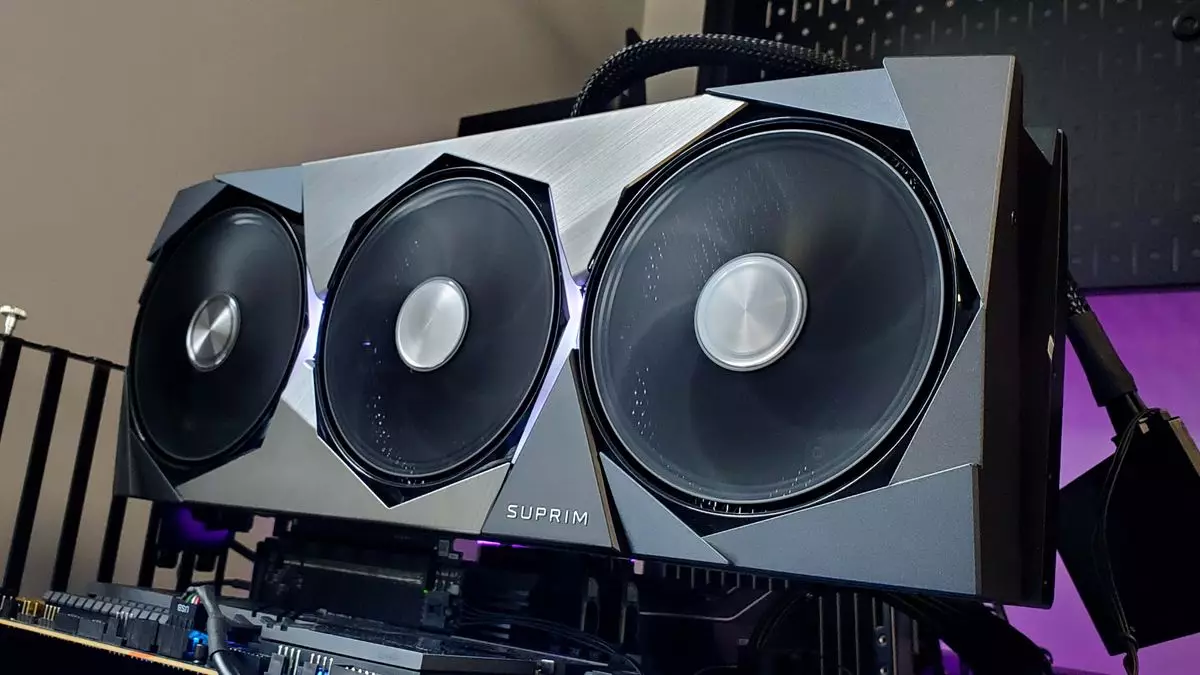When Nvidia unveiled its RTX 50-series GPUs, anticipation surged among gamers and tech enthusiasts alike. The sheer promise of enhanced performance and cutting-edge technology seemed unparalleled. However, the subsequent launch can only be described as a letdown of significant proportions. From inventory shortages to inflated prices, the RT 50-series has left many questioning Nvidia’s strategy and execution. It appears that what should have been a triumphant moment has caused frustration and disappointment, stirring emotions in an audience that eagerly awaited some innovation.
The first red flag was the minimal stock availability. What good is a highly touted product if consumers cannot purchase it? The shelves remain largely barren, denoting a frustrating landscape for those hoping to upgrade their gaming rigs or build new ones. The elation of a new product often dwindles into a bitter experience when potential buyers are faced with a sea of ‘out of stock’ notifications. This scenario incites a deeper examination of Nvidia’s supply chain management and strategic planning.
Price Reductions: A Ray of Hope or Just a Mirage?
Nvidia’s recent price adjustments for the RTX 50-series, reported through various outlets such as VideoCardz, have sparked some discussion. However, it is crucial to dissect the context surrounding these reductions. For starters, the decrease applies only within Europe and the UK, predominantly affecting the Founders Edition cards. It’s noteworthy that the RTX 5070 Ti remains steadfast in its pricing due to the absence of a Founders Edition version. Such selective cuts might appear beneficial but, in actuality, they serve merely as a temporary balm on a wider issue.
The slight reductions, approximately 4.3–4.6% in regions like Germany, merely keep pace with the declining value of the USD. While any price cut is usually welcomed, we must scrutinize the validity of such adjustments in light of market conditions. The lack of inventory to support these MSRPs undermines their significance, presenting a peculiar paradox where consumers encounter discounts on products they cannot procure. This ultimately leads to a feeling of helplessness, as the gaming community is left with disappointment instead of the anticipated joy that new technology should bring.
Comparative Performance: Nvidia vs. AMD
In the midst of Nvidia’s plummeting stock and lackluster sales, AMD has managed to garner attention with their RX 9070 and RX 9070 XT cards. Reports suggest that AMD has achieved substantial sales numbers, exceeding 200,000 units, indicating a favorable reception in this competitive landscape. However, AMD’s plight is no picnic either; stocks are low, and prices remain high. This raises broader questions about supply chain management across the industry, pointing towards systemic issues rather than isolated failures from Nvidia alone.
While to some it may appear that AMD is reaping the rewards, the truth is that both companies are trapped in a similar cycle of high demand and insufficient supply. For any business, especially a dominant player like Nvidia, witnessing a competitor attract customers while grappling with self-inflicted wounds is particularly galling. It prompts one to wonder if Nvidia’s focus on consumer-facing aesthetics and performance figures lost sight of the very fundamentals of supply, demand, and accessibility.
The Implications of GPU Pricing and Market Dynamics
The recent fluctuations in GPU pricing not only have implications on consumer behavior but also reflect a broader narrative about market dynamics. As GPUs have become more than simple components; they encompass a lifestyle choice for many gamers and content creators. Expectations ascend beyond merely owning hardware; consumers now demand reliability, availability, and fair pricing.
The glimpses into Nvidia’s world, where supply shortages meet ill-conceived pricing strategies, illustrate a cautionary tale for technology firms. The debate on gaming hardware increasingly revolves around the accessibility of technology, esoteric performance metrics, and consumer trust. It remains imperative that manufacturers like Nvidia not only innovate but also foster an ecosystem that promotes availability and equitable pricing practices.
In the current tumultuous climate, discerning consumers are likely to consider alternatives, amplifying the risk of losing significant market share to competitors. As the GPU landscape evolves, Nvidia’s actions in response to this crisis will determine whether they can adapt effectively or become a relic of past successes overshadowed by operational missteps.

